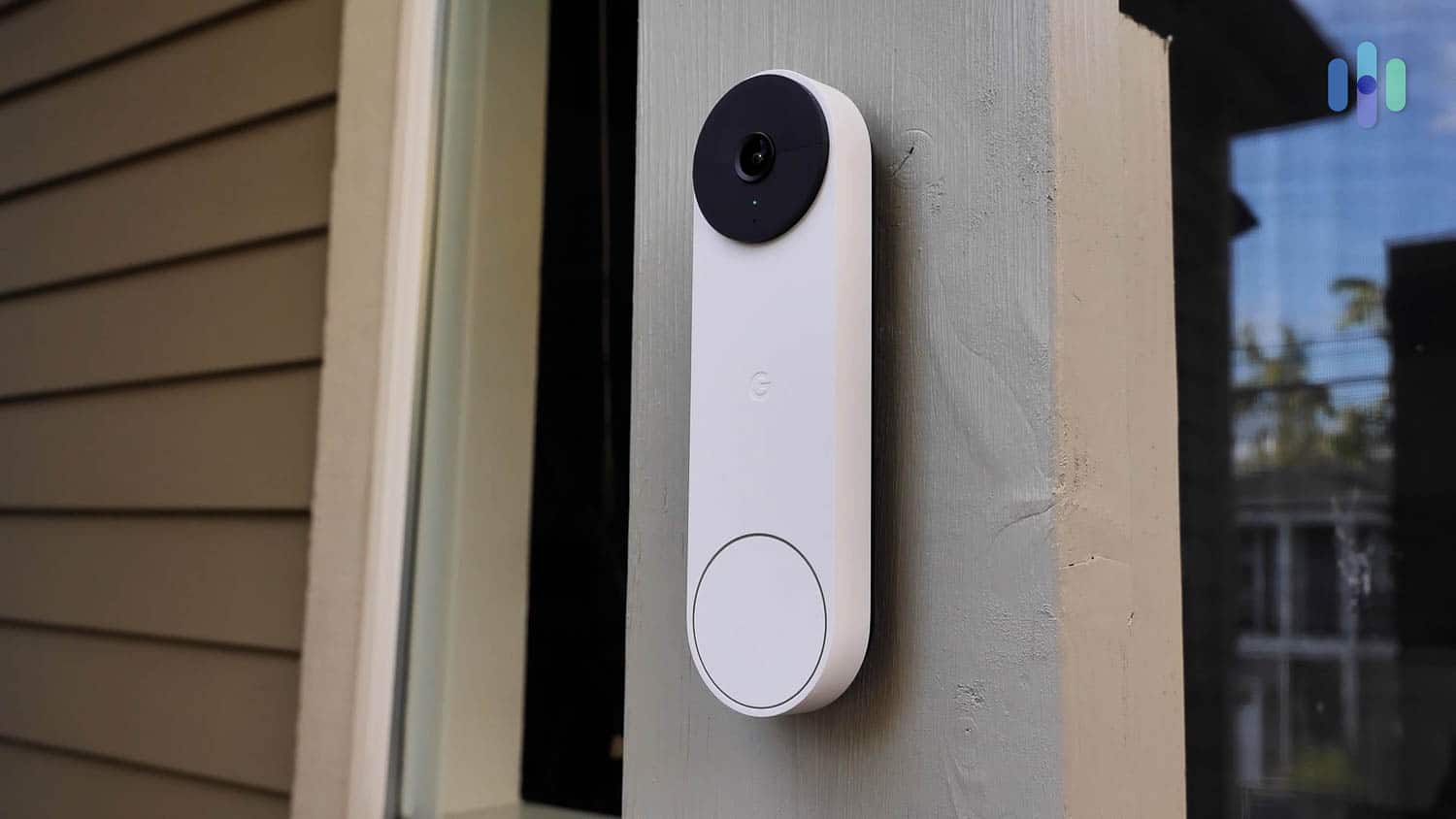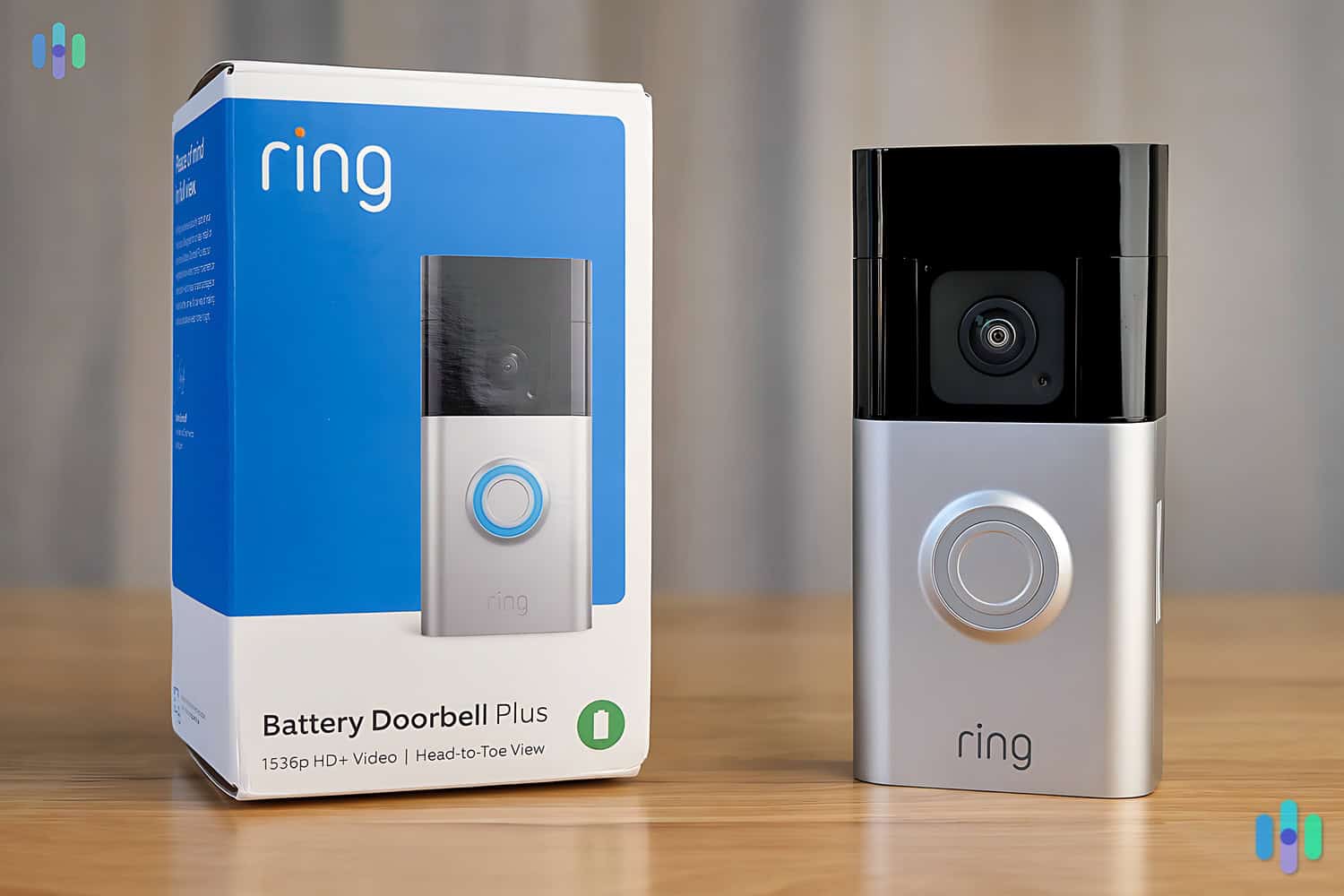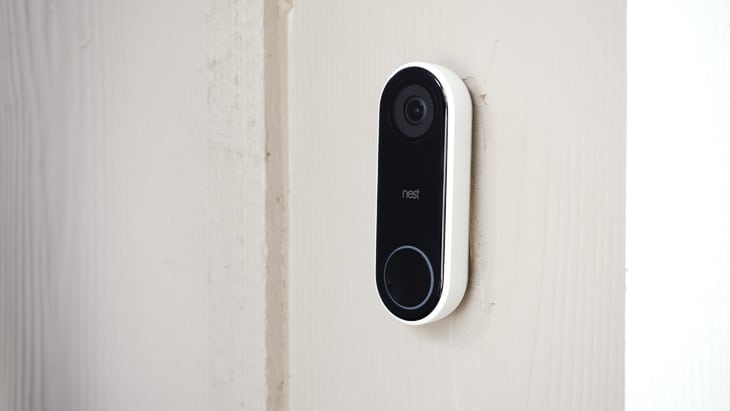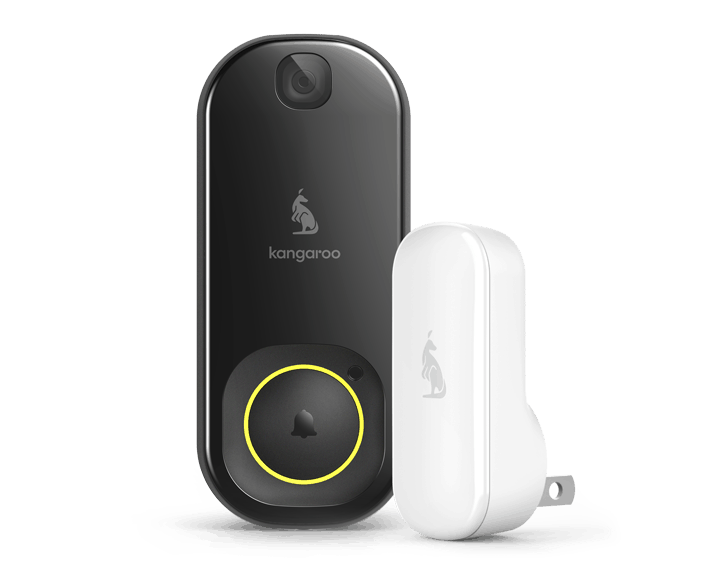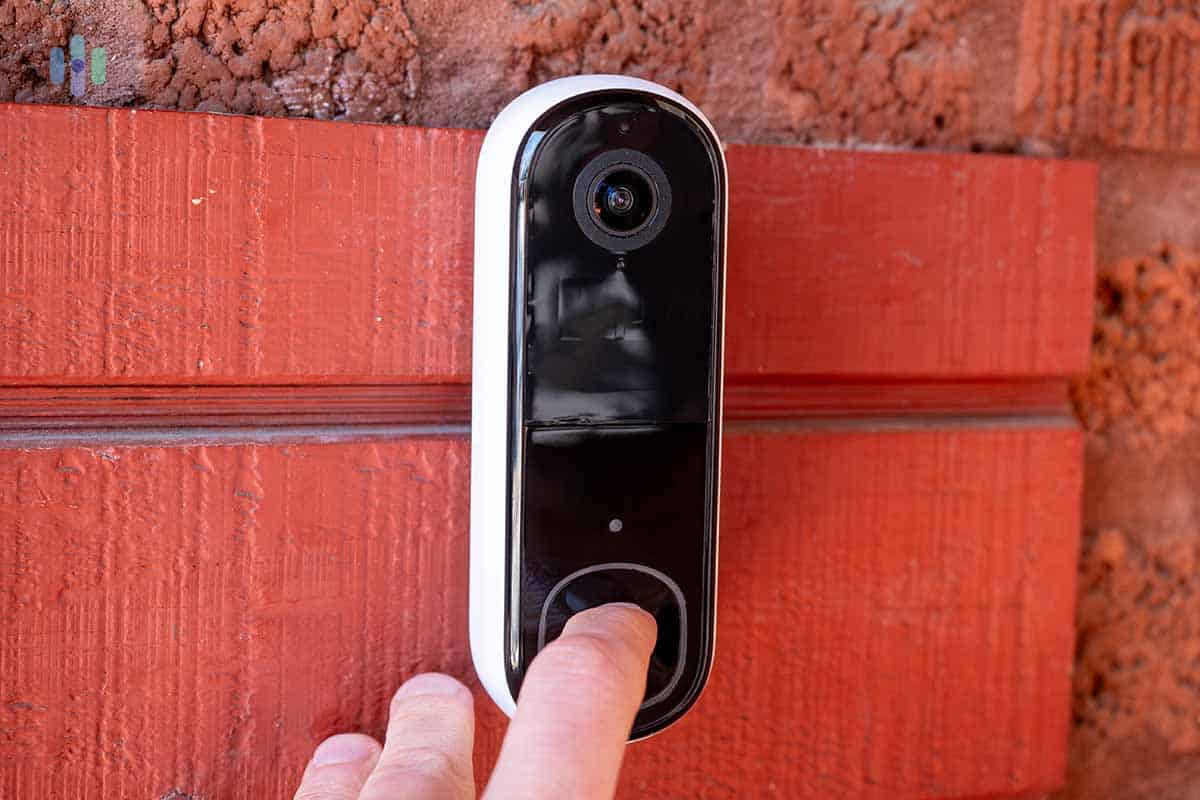Best Doorbell Cameras for Low Lighting 2025
Our top pick, Lorex, provides 2K HDR video, color night vision, and local storage, meaning no monthly fees, for its cameras.
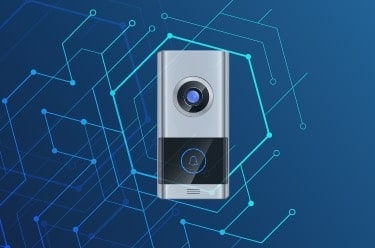

- Easy to set up battery-powered doorbell
- Works with ADT Trusted Neighbor feature
- Four 850nm IR LEDs for 10-foot night vision

- 2K HDR video
- Color night vision
- Local storage, no monthly fees

- Near-2K HDR video
- Advanced motion detection
- Extra-wide field of view
Doorbell cameras do a great job of recording front door interactions – from porch pirates to Amazon deliveries. Their footage is generally clear during the day, but in our years of testing doorbell cameras, we’ve also encountered devices with terrible nighttime videos. We’re talking about grainy videos even when the subject is standing just a foot away from the door. You don’t want that; not when you’re looking to invest in a top-quality video doorbell.
In our search for doorbell cameras that work great in low-light and no-light conditions, we ended up with six excellent, expert-tested recommendations. ADT tops the list with its Google Nest Doorbell that isn’t only night vision-capable, but also has useful smart features. Keep reading to find out which other doorbell cameras we recommend for low-light use.
Our Review Process: Key Features We Looked For
| Video quality | 1080p and up |
|---|---|
| Night Vision quality | Color night vision with High Dynamic Range (HDR) |
| Field of vision | 140 degrees-plus |
| Smart home integrations | Compatible with Google Home, Amazon Alexa, and Apple HomeKit |
| Response time | Faster wired connections |
| Cost | $180 and under |
Top 5 Doorbell Cameras for Low Lighting
- ADT Doorbell Camera - Best Security System Doorbell Camera
- Lorex Video Doorbell - Best Image Quality
- Ring Wired Doorbell Pro - Best Motion Detection
- Nest Doorbell - Best Smart Home Integration
- Wyze Video Doorbell - Best Budget Camera
- Arlo Video Doorbell - Best Field of View
Did You Know: Color night vision cameras may shoot more detailed video at night than lower-contrast infrared (IR) cameras, but only when there’s enough ambient light. In near or total darkness, most cameras with color night vision will revert to black-and-white IR.
Comparison of the Best Low-Light Doorbell Cameras
| System |
ADT Doorbell Camera

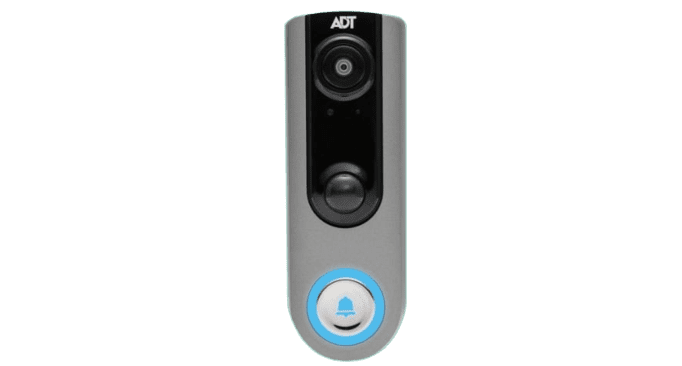
|
Lorex Video Doorbell

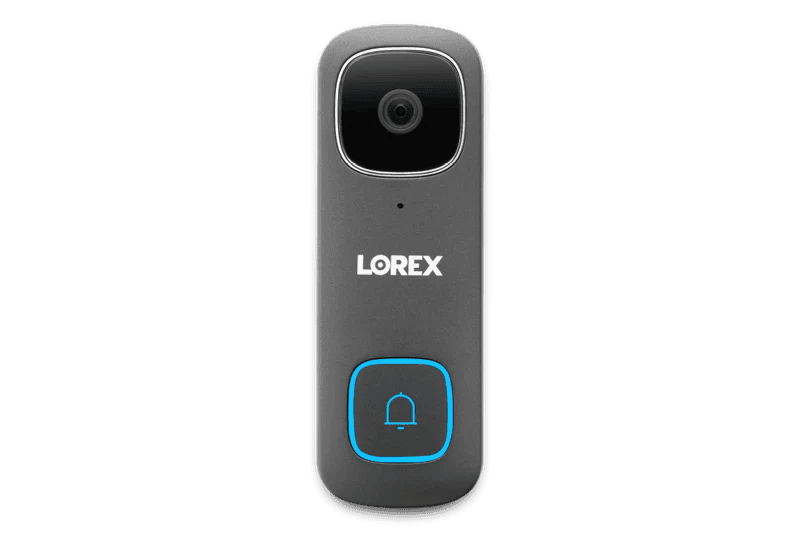
|
Ring Wired Doorbell Pro

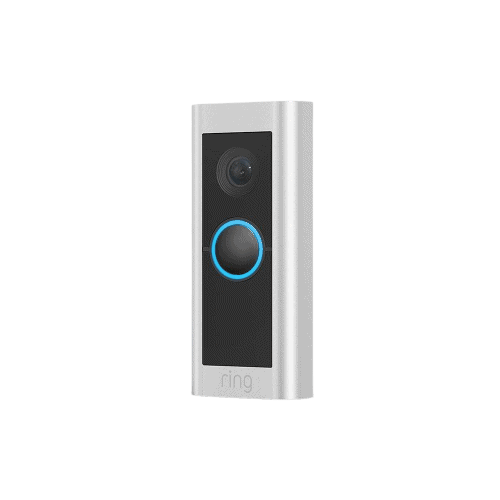
|
Nest Doorbell

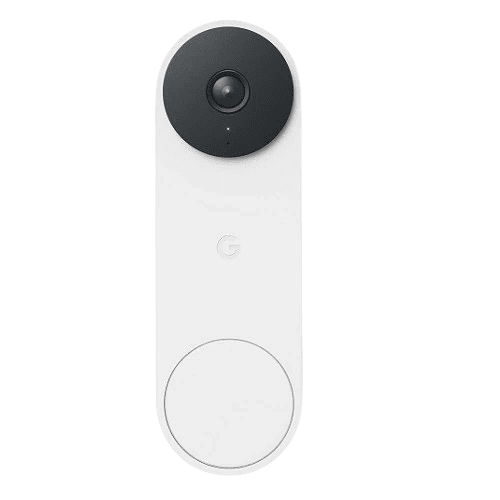
|
Wyze Video Doorbell

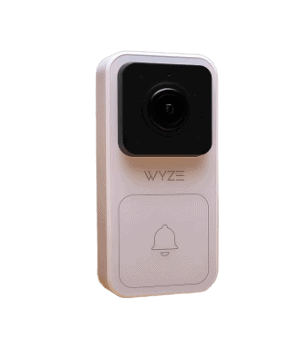
|
Arlo Video Doorbell

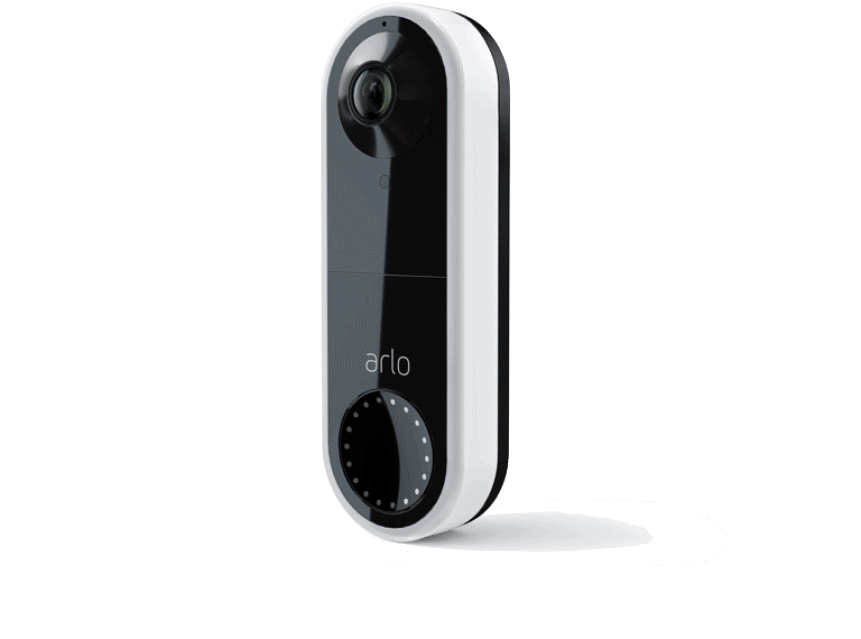
|
|---|---|---|---|---|---|---|
| Ranking | 1st | 2nd | 3rd | 4th | 5th | 6th |
| Ratings | 9.3/10 | 7.5/10 | 9.2/10 | 9.0/10 | 8.7/10 | 9.1/10 |
| Cost | $179.99 | $149.99 | $229.00 | $179.99 | $29.99 | $129.99 |
| Resolution | 1080p | 2K | 1536p | 1200p | 1080p | 1536p |
| Aspect ratio | 3:4 | 4:3 | 1:1 | 3:4 | 3:4 | 1:1 |
| Field of view (horizontal) | 145 degrees | 164 degrees | 160 degrees | 145 degrees | 120 degrees | 180 degrees |
| Night vision | Black and white | Color, black and white | Color, black and white | Color, black and white | Black and white | Black and white |
| High Dynamic Range (HDR) | Yes | Yes | Yes | Yes | No | Yes |
| Two-way audio | Yes | Yes | Yes | Yes | Yes | Yes |
| Monthly cloud plans | $8 and up | N/A | $4.99 and up | $8 and up | $2.99 and up | $7.99 and up |
| Native smart-home integration | Google, Amazon, ADT home automation | Google, Amazon | Google, Amazon | Google, Amazon, Samsung | Google, Amazon | Google, Amazon, Apple, Samsung |
| Package detection | Yes | No | Yes | Yes | Yes | Yes |
| Installation | Battery | Wired, battery | Wired | Wired, battery | Wired | Wired, battery |
| Read Review | ADT Doorbell Camera Review | Lorex Video Doorbell Review | Ring Wired Doorbell Pro Review | Nest Doorbell Review | Wyze Video Doorbell Review | Arlo Video Doorbell Review |
-
1. ADT Doorbell Camera - Best Security System Doorbell Camera
View Packages Links to ADT.comADT is a home security brand, and like any of the best security systems, it offers doorbell cameras. We won’t go into too much detail about the doorbell from ADT – the Nest Doorbell (battery) – because it actually also made this list as a standalone device. What we will say, though, is that using the Nest Doorbell with ADT makes it even better. The low-light video quality doesn’t improve, but you’ll gain access to unique features such as Trusted Neighbor and video verification that you don’t get from a standalone Nest Doorbell, or most other doorbell cameras for that matter.
>> Learn More About ADT: Our 2025 ADT Home Security System Review
What We Like
- Facial recognition powers the Trusted Neighbor feature
- 1080p HD resolution with HDR
- Lower bandwidth requirements than 4K and 2K cameras
- Provides video verification for ADT alarms
What We Don’t Like
- Best features require a monitoring subscription
- A three-year contract may be required
- Wired option not available from ADT
- Tall but not very wide field of view
Video Verification and Trusted Neighbor
Since buying a Nest Doorbell from ADT links the device to a security system, you get some extra benefits. First is video verification, which would allow ADT’s monitoring center to confirm alarms through security camera footage, including from the Nest Doorbell. Trusted Neighbor, on the other hand, is a rule-based automation feature that uses Nest Doorbell’s facial recognition to identify and let designated trusted people in your home when needed. Both features require a monitoring plan from ADT (the Complete plan that ranges from $39.99 to $49.99 per month). Trusted Neighbor also requires a compatible smart lock.
Our Experience: Since we started testing ADT, we set up Trusted Neighbor to automatically let our dog walker in everyday between, but only during windows of time he usually stops by to pick up and drop off our pet. On weekends, his scheduled drop-off time is around 7 p.m., and the Nest Doorbell still does a superb job of recognizing him.
Professional Installation
Note that ADT offers only the battery-powered version of the Nest Doorbell, and in our experience testing it as a standalone device, it’s very easy to install. We appreciate ADT’s professional installation service, though. The technician suggested a slightly different placement for our doorbell, and we believe he made the right call. His placement ultimately gave our doorbell better coverage of our front yard than what we had in mind.
The ADT technician installed our Nest Doorbell on this wooden post instead of next to our front door, and it gave the camera a better vantage point. Pro Tip: If you want a Nest Doorbell from ADT, but prefer to install it on your own, check out our ADT Self Setup review. The company now allows DIY installation.
Frequent Video Doorbell Deals
The Nest Doorbell (battery) costs $179.99. That’s the retail price from Google as well, so ADT’s pricing is not marked up. In fact, it’s the opposite. ADT often runs deals, and the company sometimes gives away the Nest Doorbell for free if you buy a participating package. Other times, it offers the doorbell camera at discounted prices. During the ADT Black Friday sale last year, for example, the pre-customized package that includes a doorbell camera – the Front Door Protection package – received a whopping 60 percent discount. That’s over $100 off of the $179.99 original retail price.
Keep in Mind: To take advantage of the best features – Trusted Neighbor and video verification – you need a professional monitoring plan. So when budgeting, make sure you take into account the $39.99 (for DIY ADT systems) to $49.99 (for professionally installed systems) monthly monitoring fee.
-
2. Lorex Video Doorbell - Best Image Quality
View Packages Links to Lorex.com
The Lorex 2K doorbell cam may not have everything — like Siri integration (ouch!) — but the video quality is superb, even at night when many competitors head to Grainy Town. At $150, the wired model is 30 bucks cheaper than Lorex’s battery-powered video doorbell. Same features, permanent power source. Unless you don’t want to touch doorbell wires or you can’t get someone to do it for you, this is a great way to rid yourself of the dreaded “low battery alert” forever.
What We Liked
- 2K HDR color night vision
- No monthly fees
- Up to 64 gigs of local storage
- Affordable
- Person detection
What We Didn’t Like
- No professional monitoring available
- Requires hardwiring
- No package detection
Sharp 2K Video
The Lorex 2K delivers precision video, with live feeds as clear as recorded clips. Two-way audio is also loud and clear, eliminating laggy, off-kilter convos. As long as you place the Lorex doorbell cam snugly next to your door, the extra-wide 164-degree field of view will easily cover your entire front-door area.
Color Night Vision
Low lighting wasn’t a problem for the Lorex 2K. Without any front-door illumination, you may notice slightly washed-out colors in color mode, but black-and-white IR footage is excellent. If you need to get a closer look at a potential perp from a distance, the Lorex 2K features a pretty handy 8x digital zoom. The wider viewing range, which is good for detecting activity at the fringes, may distort objects at greater distances, especially in low-light situations.
Local Storage
Local storage makes sense for plenty of homeowners. You escape monthly cloud-storage bills and keep your footage away from prying eyes. Ring users will know just what I mean. The Lorex 2K comes with 32 gigs of local storage, and it’s upgradable to 64 gigs.
Our Expert Advice: Storing your video locally keeps it private and saves money, which is great. The problem is, some of the best doorbell cameras require cloud plans if you want to unlock all their AI features.
-
3. Ring Wired Doorbell Pro - Best Motion Detection
View on Amazon Links to Amazon.com
The $230 Ring Wired Doorbell Pro (known as Video Doorbell Pro 2 before) is an outlier on our $180-and-below list, but we’ve added it because the near-2K HDR Ring, with its square, top-to-bottom videos and six-second preroll footage, is pretty hard to ignore. The Wired Doorbell Pro is another wired option, so be prepared to get your hands dirty on the installation. You don’t have to sign up for a plan to use the Ring doorbell, though, but if you want cloud video storage, it will require a $4.99 monthly subscription.
What We Liked
- Crystal-clear, near-2K HDR video
- Extra-wide field of view
- Preroll footage
- Package detection
- Smart automations
What We Didn’t Like
- Subscription required to save recorded video
- Not compatible with Google Assistant
- Somewhat pricey
- Ring’s ongoing privacy concerns
Crystal Clear 1-by-1 HDR Video
The Ring Wired Doorbell Pro shoots in near 2K. The resolution is actually 1,536 by 1,536p, or 2.4MP, which is practically double the pixel density of the Nest Doorbell (see below). The Pro’s square aspect ratio is like an Instagram video. It doesn’t crop out traffic at the edges and it’s tall enough to capture a visitor head to toe. In low light, color video is crystal clear without any lag in notifications or buffering when you stream, thanks to the Pro’s high dynamic range (HDR) technology, similar to that of the Nest Doorbell.
Advanced Motion Detection
The wired Ring Pro doesn’t use a passive infrared (PIR) motion sensor like the battery-powered Ring Video Doorbell. It’s always on, and it will add up to six seconds of footage to the front of any motion-triggered event. That means you’ll never end up with a clip of a porch pirate’s back magically appearing on your stoop, which can happen with battery-powered video doorbells that are slower to trigger. You’ll capture his or her complete entrance and exit, which is a big security advantage.
Alexa Greetings
The Wired Doorbell Pro’s engineers went to town with native automations and integration with Alexa, which makes sense because Amazon is the parent company of Ring. You can program Alexa to tell an Amazon delivery driver where to leave your package, for example — and since the Ring Pro now has package detection, you’ll also know when the package has been dropped.
-
4. Nest Doorbell - Best Smart Home Integration
View on Amazon Links to Nest Doorbell
Remember the Nest Doorbell? Besides being our top pick because of its ADT integration, we also like it as a standalone doorbell because of how well it plays with other smart home gadgets. But more on that later. In terms of low-light performance, the Nest Doorbell doesn’t quite match the clarity or range of the Lorex 2K. Still, it has HDR, which helps in the clarity of nighttime videos. Combine that with its four 850nm infrared LEDs, and you get more than sufficient low-light video quality from one of the top smart security brands.
What We Liked
- Above-average video quality in low light
- Works seamlessly with Google Assistant and other Nest devices
- 24/7 continuous recording (with Nest Aware Plus plan)
- Sleek, stylish design
What We Didn’t Like
- A bit tricky to install
- Not cheap
- Requires cloud plan to unlock AI features
- Separate chime box
High-Res Night Vision with CVR
Like the Nest Cam, the Nest Doorbell manages to deliver crisp video day or night — even with its punier resolution (1080p HD) and lower (6x) maximum zoom factor. And if you opt for the wired version, you can also get the option for continuous video recording. That is, if you’re willing to cough up $15 per month instead of the regular $8 per month you’d pay for a Nest Aware subscription.
Expert Insight: We think CVR, especially at your front door, can provide lots of real value. Not all crooks will ring your doorbell, and by the time the motion-activated recording kicks in, it could be too late. Nest’s CVR feature in the Nest Aware Plus subscription stores up to 10 days of continuous video.
Smart Home Integration
The Nest Doorbell works with all Google smart devices, plus Amazon Alexa. Apple HomeKit is a bust, however. Sorry, Apple folks. Basic stuff such as hooking up your doorbell to your Nest Hub or Nest Secure to see who’s at the door is predictably easy, but smart automations with third-party devices such as light bulbs and switches could get tricky. If this is your first plunge into Google’s smart ecosystem, you may want to check out integrations with your existing smart equipment before you commit.
Artificial Intelligence
The Nest Doorbell is a Google product, so it’s smart and AI-powered. Smart alerts are free and can distinguish people from other moving objects. The Nest Doorbell also supports advanced facial recognition — a feature they call Familiar Face Alerts — which lets you train your Nest camera to not only recognize a human, but also to recognize specific humans and alert you accordingly. The only rain on this AI parade is that Familiar Face Alerts isn’t free. You’ll need a basic Nest Aware plan to unlock it ($8 per month for unlimited Nest cameras).
-
5. Wyze Video Doorbell - Best Budget Camera
View on Amazon Links to Wyze Video DoorbellA smart doorbell camera with 1080p HD color night vision that works with your Alexa- or Google-powered home for $29.99? Too good to be true? Nope. But there are a few things you should know about the dirt-cheap, 1080p Wyze Video Doorbell before you buy.
What We Liked
- Cheap
- Good image quality for the price
- Built-in LED light
- Affordable cloud plans
What We Didn’t Like
- 12-second clips on free plan
- Person detection is extra
- Narrow field of view
Full HD Video Quality at 3:4
Some top security cameras with less-than-stellar resolution load more info into their screens via extra-sensitive sensors, enhancing picture quality. Google Nest cams are good at this. Others have the numbers but stint a little on the goods. The Wyze Video Doorbell boasts a healthy 1080p resolution. That’s full HD on paper, but in the field, the camera’s lower processing power can’t quite compete with the Nest Doorbell. Still, the low-light image quality is very good for a device that costs about a third the price, and that’s what we’re here to talk about. The only other image-quality factor to consider with Wyze is the odd 3:4 aspect ratio, which gives you vertical portraits, not the wider landscape views you’re used to.
Wyze Lock-Compatible
Wyze is turning itself into a smart home powerhouse, so if you grab a Wyze Video Doorbell, it makes sense to pay a little more and walk away with a Wyze Lock too. You can get both for around $125. If you own both devices, you can open your front door for guests remotely via your doorbell. Sound good? Just remember that the Wyze Lock Bolt comes with a new deadbolt you have to install yourself.
Cost
At $35, the Wyze Video Doorbell is, hands-down, the best doorbell camera deal on our list. (You can actually grab the doorbell without the chime for $30!) But that price tag is a little deceptive. You can hypothetically use the Wyze Video Doorbell right out of the box without a subscription, but it would be difficult in practice. The problem is, Wyze gives you 12-second clips with five minutes of downtime in between, which is borderline useless. On the other hand, with Wyze’s $2.99 cloud storage plans — 30 days’ worth of back-to-back clips — you unlock package, pet, and vehicle detection. That’s an offer most Wyze users will literally not be able to refuse.
FYI: Smart doorbell automations give you all sorts of options for tricking wannabe thieves. If you have an Amazon Echo, for example, you can tell Alexa to play an audio clip of dogs barking whenever someone hits the doorbell and you’re not around. Pretty sneaky.
-
6. Arlo Video Doorbell - Best Field of View
View Packages Links to Arlo.comArlo Video Doorbells are the most versatile smart buzzers we’ve tested, natively compatible with Google Assistant, Amazon Alexa, Apple HomeKit, and Samsung SmartThings. Video quality is high for a $130 (wired) doorbell camera. Its viewing range is a whopping 180 degrees, and its smart functions are impressive. The only catch? Unlocking all of Arlo’s goodies requires a $7.99 monthly investment.
What We Liked
- Compatible with all major smart-home systems
- Near-2K HDR video quality
- Three-month Arlo Secure trial
- Wired and wireless models available
What We Didn’t Like
- Requires Arlo Secure subscription to unlock package detection
- App is a bit confusing
- No IP weatherproofing rating
1536p HDR IR Video
Arlo isn’t king of the hill when it comes to nighttime video. The 1536p HDR Essential Video Doorbell can go head to head with the Ring Pro 2 — by day at least. Come nighttime, without color night vision, the Essential’s black-and-white IR shoots a bit muddy. Its massively wide 180-degree field of view, on the other hand, is impressive. The only caveat is that the 1-by-1 frame, stretched so wide, can pull objects out of shape.
Flexible Smart Integrations
One of the issues you find with many premium doorbell cameras is smart-home integration. When a buzzer isn’t compatible with your ecosystem, you have to search for hacks and middleman platforms. That’s generally a hassle, no matter how easy the patch is. Kudos to Arlo for solving the problem by allowing homeowners to connect natively to all major smart device vendors. Apple households, in particular, will appreciate this.
Messages
We have a soft spot for smart doorbells that can do tricks, such as barking at prowlers (scroll up for that). Arlo has a few tricks of its own. Package detection is at the top of the list, followed by people, vehicle, and pet detection. You can also program the Arlo Essential to ask visitors to leave a message if you’re not around, which is kind of neat but maybe not at the top of our “doorbell feature upgrade” wish list.
Unfortunately, all the features I’ve described above — the super useful and not so useful — won’t work without an Arlo Secure subscription. Those start at $7.99, so they’re not outrageously expensive, but still. It’s the principle of the thing.
Our Expert Advice: Wired video doorbells may be a bit of a hassle to install, but they have two major advantages over their battery-powered cousins: You don’t have to charge them because they draw power through your electrical system, and video quality and motion detection are substantially better.
Methodology: How We Ranked These Video Doorbells
Video Quality
For a doorbell camera to make our top-five list, video quality had to be above average. We were looking only at doorbells with full HD (1080p) and above, because crisp video is a must in low lighting. HDR was also a plus, and so was color night vision.
Cost
It’s not a testable feature, but cost was also in the back of our minds when we made our selections. We were looking for affordable doorbell cameras, which meant anywhere from $150 to $180. The considerably pricier Ring Wired Pro ($230) and the bargain-basement Wyze Video Doorbell ($35 with the chime) were the outliers. The Ring Wired Pro’s price was definitely a consideration. Although close in video quality to the Lorex, the Ring’s much heftier price tag earned it a lower spot on our list.
Cloud Plans
Our final two considerations were cloud plans and smart-home integration. Some of our favorite nighttime video doorbells, such as Lorex, don’t lock you into a subscription plan to use its key features. Most of the other doorbells we tested do. We’ve let you know which brands they are and how much you should expect to pay each month.
Smart-Home Integration
Smart-home integration is last on our list, but it’s probably the first thing you should check when shopping for a doorbell camera — especially if your home is Apple-friendly. HomeKit isn’t well represented on this list, for example, while Google and Amazon are everywhere.
Final Thoughts
Those were the main criteria for our low-light video doorbell champs. There were plenty of hurdles to clear, and some pretty stiff competition. Obviously, you’ll notice a difference between a $35 camera (Wyze) and one that costs $230 (Ring). Brands can’t perform magic. All differences aside, however, any of the doorbell cameras we tested should deliver exceptional nighttime footage, making them high-quality, hopefully long-lasting additions to your home security arsenal.
FYI: Passive infrared sensors are good at picking up side-to-side motion, but not very good at detecting motion when objects are approaching from the front. That explains why, if you’re using a battery-powered doorbell with PIR motion detection, your doorbell sometimes captures events late.
Best Low-Light Video Doorbell FAQs
-
Are video doorbells with color night vision better?
Cameras with color night vision shoot more detailed, higher-contrast video — as long as there’s a little ambient lighting — so they’re definitely an advantage at night.
-
What’s the best aspect ratio for video doorbells?
That depends on what you’re using your doorbell camera for. Wider landscape views (4:3) are good for patrolling whole front door areas. Vertical, top-to-bottom shots (3:4) are good for seeing people and packages right in front of you. Square views (1:1), which you find more and more these days, are a compromise between the two.
-
Do I need a 2K doorbell camera to see well at night?
Not necessarily. Cameras such as the Nest Doorbell, with better sensor quality and higher processing power, shoot high-quality video at lower resolutions.
-
What’s HDR and how does it improve image quality in low-light situations?
HDR stands for “high dynamic range.” Cameras with HDR technology display colors and shades in greater detail, increasing contrast between objects. That lets you see more clearly in low-light situations.
-
Should I invest in a cloud plan for my video doorbell?
Tough question. Ideally, you shouldn’t have to, but many brands don’t let you unlock the full functionality of their products without one. On the bright side, some cloud plans are pretty cheap. Wyze and Arlo, for example, start at $2.99 and $7.99, respectively.


